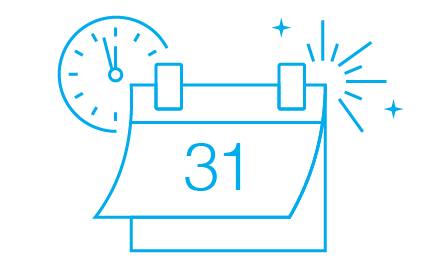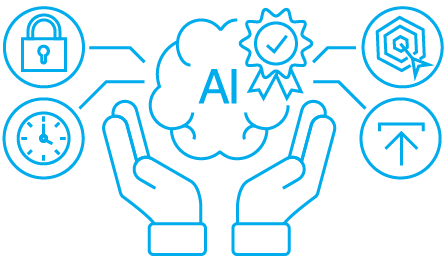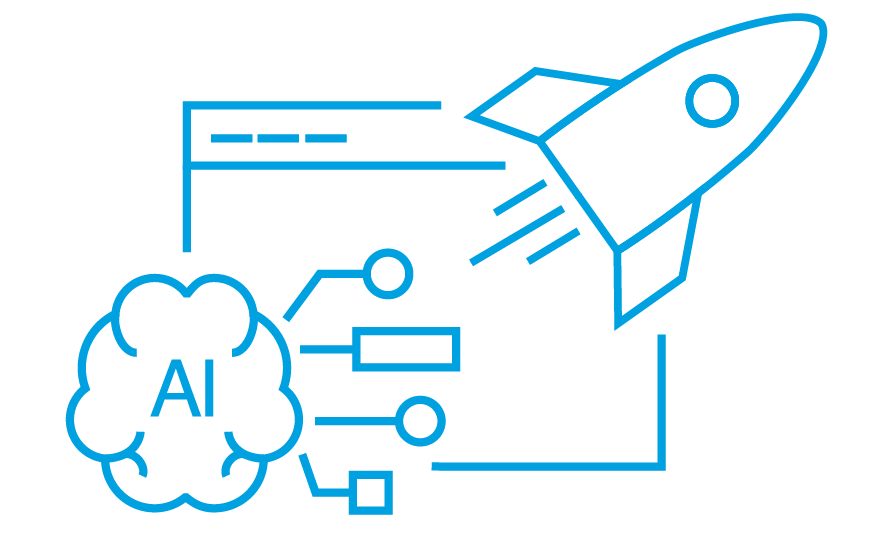- What is Data Aggregation?
- What are the types of data aggregation?
- What is the step by step data aggregation process?
- What are the benefits of Data Aggregation?
- What are the challenges of data aggregation?
- What are the use cases of data aggregation?
- How does AI impact Data aggregation?
- How does the data aggregation process happen at OnAudience?
- Wrapping up
Data aggregation is the process of collecting, organizing, and consolidating data from different sources into a single dataset. With the rise of big data, data aggregation has become increasingly important for businesses, organizations, and governments to make informed decisions.
It allows them to gain insights into their operations, customers, and markets, and helps them identify trends, patterns, and anomalies that can inform their strategies and tactics.
In this article, we will explore the challenges of data aggregation, its use cases, the impact of AI on data aggregation, and the types of data aggregation available.
What is Data Aggregation?
Data aggregation refers to the collection of raw data from various sources, combining it, and presenting it in a concise and organized manner within a single database.
It entails compiling information from numerous sources, organizing it, and doing statistical analyses or building a consolidated dataset.
Data aggregation is frequently used to more effectively analyze vast amounts of data, spot patterns or trends, and generate insightful conclusions. It can be used to make educated judgments and draw precise conclusions from multiple data sources in a variety of sectors, such as business analytics, market research and trends, and financial forecasting.
What are the types of data aggregation?
The choice of aggregation method depends on the nature of the data, the desired outcomes, and the analytical requirements of the specific use case. We can differentiate various data aggregation types such as:
- Temporal aggregation – Involves grouping data over a period of time, such as hourly, daily, weekly, or monthly.
- Spatial aggregation – Involves grouping data based on a geographic location, such as country, city, or state.
- Hierarchical aggregation – Involves grouping data based on a hierarchy, such as organization, department, or team.
- Attribute aggregation – Involves grouping data based on shared attributes, such as gender, age, or income.
What is the step by step data aggregation process?
The process of data aggregation involves several steps. Here is a general overview of how it typically happens:
- Data Collection: Raw data is gathered from various sources, which can include databases, APIs, spreadsheets, websites, social media platforms, sensors, and more. The data can be structured, semi-structured, or unstructured, depending on the source.
- Data Cleaning and Transformation: The collected data may contain inconsistencies, errors, or missing values. In this step, the data is cleaned, standardized, and transformed into a consistent format. This process involves removing duplicates, handling missing data, resolving inconsistencies, and ensuring data quality.
- Data Integration: If the data is collected from multiple sources, it needs to be integrated into a single dataset. This involves mapping data fields, resolving conflicts in data structure or format, and merging the data based on common identifiers or keys.
- Data Aggregation: Once the data is cleaned and integrated, it can be aggregated based on specific criteria. Aggregation can involve summarizing data by grouping it based on attributes or dimensions, calculating statistical measures (such as sums, averages, counts), or creating derived variables.
- Data Presentation and Analysis: The aggregated data is then presented in a summarized format, which can be in the form of tables, charts, graphs, or reports. This summarized data is easier to analyze and interpret, providing insights and supporting decision-making processes.
It’s crucial to keep in mind that the precise procedures and methods utilized in data aggregation can change based on the situation, analysis or use case that is required. The data aggregation process can also be streamlined and hastened by using automated tools and algorithms.
What are the benefits of Data Aggregation?
Data aggregation offers several benefits, including:
- Summarizes and simplifies data: Gathering data from multiple sources into a single dataset or summary makes it easier to analyze and interpret large amounts of information. It provides a concise view of complex data sets, allowing for faster decision-making and identification of patterns and trends.
- Enables statistical analysis: Aggregated data sets are ideal for conducting statistical analysis. Combining and organizing data from different sources allows for more accurate and reliable statistical calculations. This analysis can provide valuable insights and support data-driven decision-making.
- Improves data quality: Data aggregation involves processing and cleaning raw data, which helps to eliminate errors, inconsistencies, and redundancies. Improving data quality allows to ensure that datasets are more accurate for reliable data analysis.
- Facilitates trend identification: Aggregated data can reveal trends and patterns that may not be apparent when analyzing individual data points. By consolidating data over time or across different dimensions, aggregation enables the identification of long-term trends, seasonal patterns, and other valuable insights that can guide strategic planning and forecasting.
- Enhances data privacy and security: Data aggregation can help protect sensitive information by reducing the need to transmit or store individual-level data. Instead of sharing raw data, aggregated data can be used to provide insights while maintaining the privacy and security of individuals. This is particularly important when dealing with personally identifiable information (PII) and complying with data protection regulations.
- Supports data-driven decision-making: Aggregated data provides a comprehensive and holistic view of the information, enabling organizations to make data-driven decisions. Analyzing trends, patterns, and relationships in aggregated data, businesses can identify opportunities, optimize processes, and improve overall performance.
Overall, data aggregation streamlines the analysis process, improves data quality, and empowers organizations to make more informed decisions based on comprehensive and reliable information.

What are the challenges of data aggregation?
The accuracy and consistency of raw data are essential to ensure that the insights derived from data analysis are reliable and actionable. There are challenges that businesses face when aggregating data such as:
Data integration
Data aggregation involves collecting and combining data from multiple sources that have variable formats and structures which makes the process challenging and time-consuming, particularly with large or complex datasets. To mitigate these challenges, it is advised to parse the data beforehand, which involves converting raw data into a more manageable format. This approach can help to simplify the data aggregation process and improve its efficiency.
Data privacy
It is one of the most critical aspects of data aggregation as it involves the collection and analysis of personal identifiable information (PII). In order to comply with privacy regulations, GDPR and CCPA laws, the data goes under the pseudonymization process to ensure the users with the highest privacy standards.
Data quality
Ensuring the quality of aggregated data depends on the number of factors such as the source of data, its completion and consistency. Once the data is obtained from known and valuable sources it undergoes the cleaning process whose main aim is to remove inconsistencies in data. Regular monitoring of data can help identify any issues at the early stages and prevent low-quality data from influencing business decisions.
What are the use cases of data aggregation?
Data aggregation can be useful for many different types of decisions, including those related to financial analysis and markets, trends monitoring and market intelligence decisions.
Financial markets
Data aggregation can be particularly useful in financial analysis and markets, such as monitoring stock prices and predicting market trends. In the context of cryptocurrency, alternative data sources such as social media activity, web traffic, and news articles can be aggregated to monitor the market and inform investment decisions.
Trends monitoring
Data aggregation can aid in monitoring social media trends and customer sentiment, which can inform marketing and branding strategies.
Market intelligence
It can also help businesses gain market intelligence by analyzing customer behavior, sales trends, and market competition. It is important to note that the quality of the aggregated data is crucial to ensure accurate and reliable insights. Additionally, data aggregation can also be used for risk management, fraud detection, and customer profiling.
In order to benefit from data aggregation, businesses must have a well-defined tracking plan, data validation process, data cleaning process, and regular monitoring and auditing to ensure data quality.

How does AI impact Data aggregation?
AI has a significant impact on data aggregation by automating and improving the process. With AI algorithms, large volumes of data can be collected, analyzed, and aggregated in real-time, making it faster and more efficient. AI identifies data patterns and trends, allowing for more accurate and insightful data aggregation results.
The main areas artificial intelligence (AI) impacts data aggregation:
- Data cleansing – allows for cleaning and normalizing data by identifying and correcting errors, duplicates, and inconsistencies. It can also improve the quality of the aggregated data.
- Data integration – combines data from different sources by identifying and mapping common fields and attributes. It reduces the time and effort required for data integration.
- Data analysis – helps with analyzing aggregated data by applying machine learning algorithms and models. It allows businesses to gain insights and make predictions based on the aggregated data.
How does the data aggregation process happen at OnAudience?
At OnAudience data aggregation process begins with the retrieval of data from various sources such as:
- Data companies
- Technology providers
- International networks
- Global databases
The data is gathered from multiple sources in the raw format and merged into a single database, which is further used by data operations or developers with specific queries to extract information needed.
OnAudience has its own proprietary technology which allows it to aggregate and manage data without the need of accessing cloud space of any third-parties solutions. It is especially important in regard to data privacy as it eliminates the risk of data breaches and helps to ensure the privacy and security of data.
Wrapping up
Data aggregation is a powerful process for businesses, organizations, and governments that helps to make informed decisions based on data. It has many use cases across different industries and domains, and it presents some challenges that need to be addressed.
With the impact of AI on data aggregation, businesses can expect to see more automation, optimization, and innovation in this field. By understanding the types of data aggregation available and the benefits and challenges involved, businesses can leverage this tool to gain a competitive advantage and achieve their goals.




